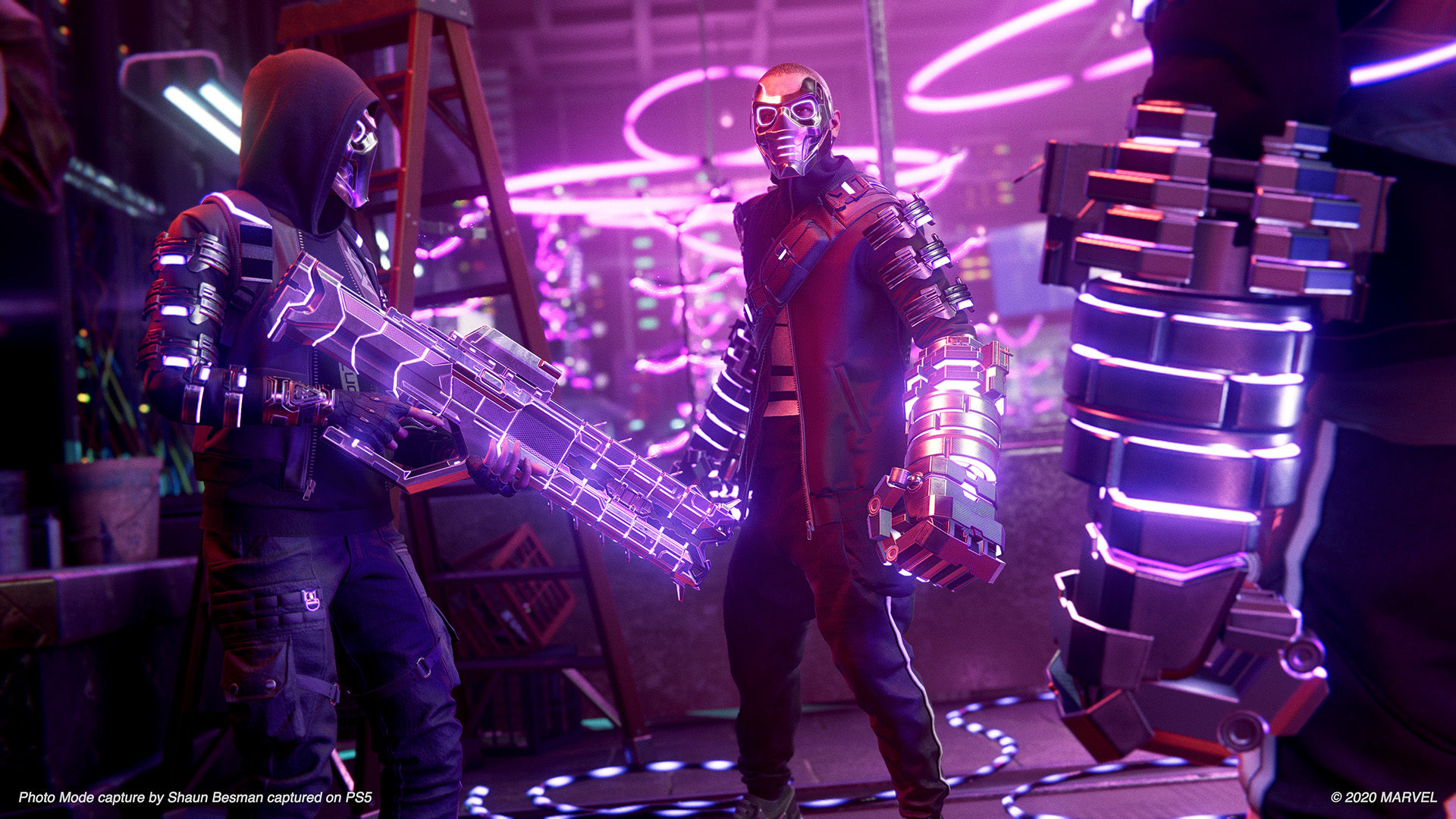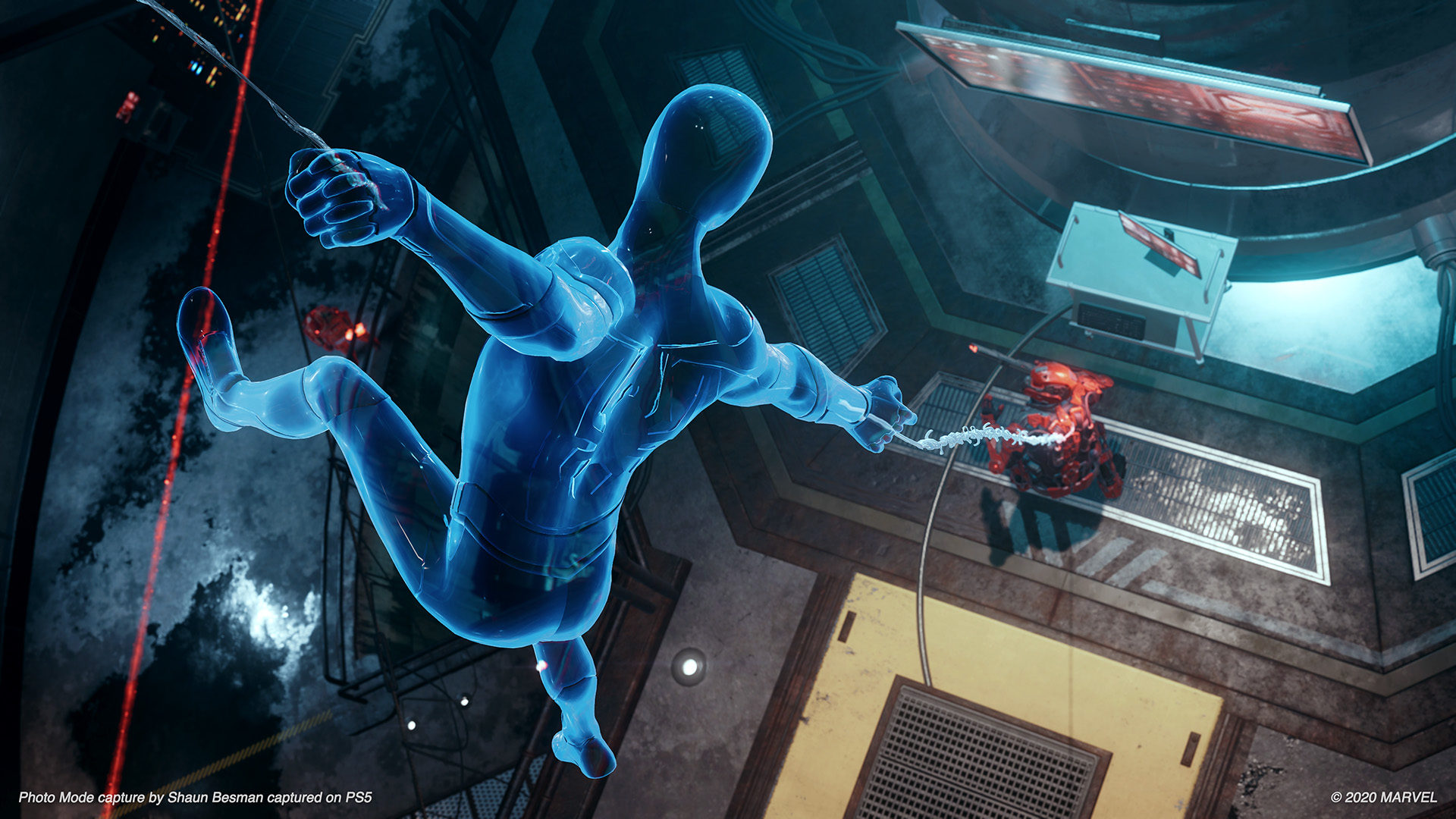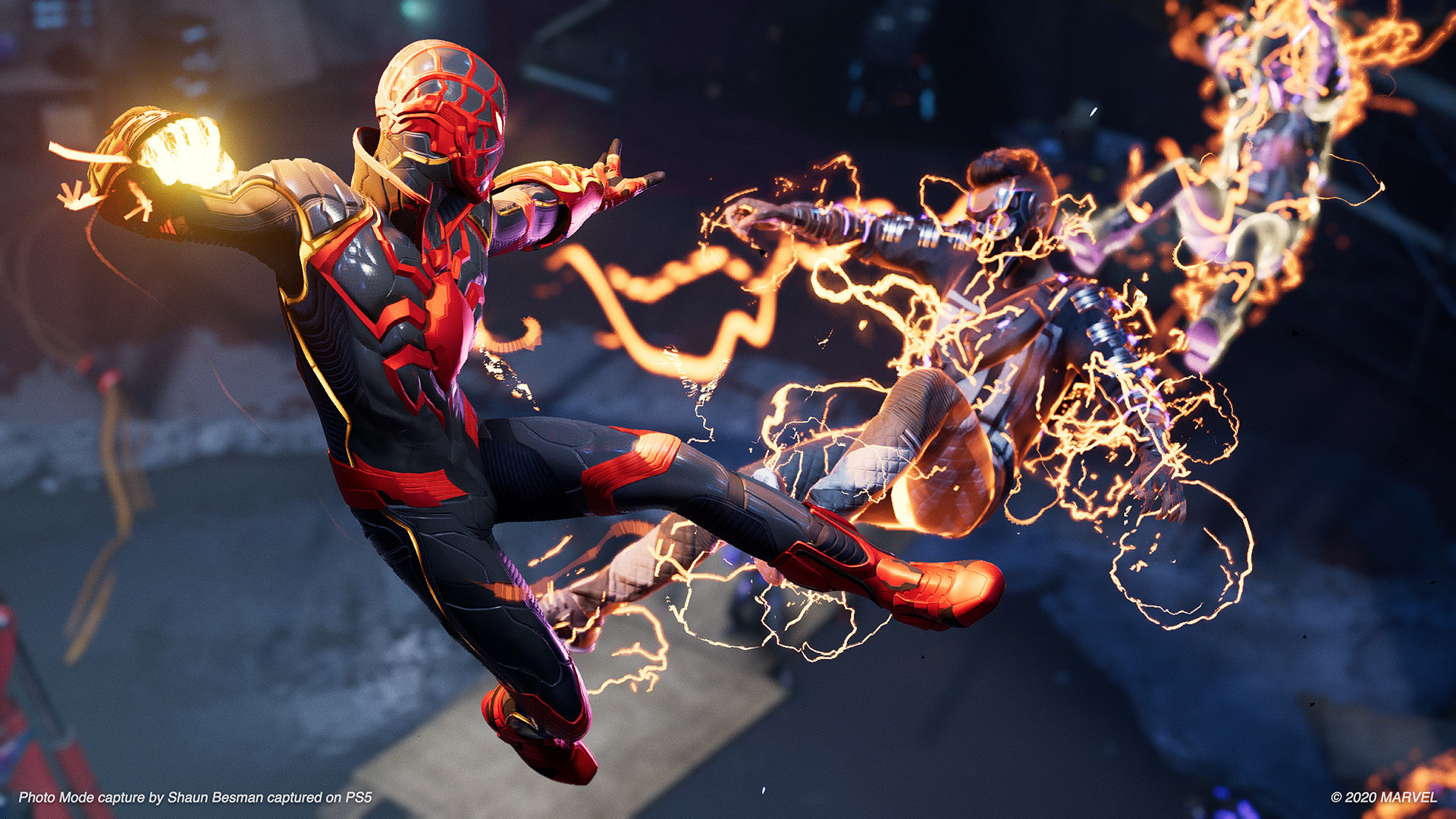Has there ever been a game that’s had to shoulder quite as much as Marvel’s Spider-Man: Miles Morales?
Let’s do a quick tally. It’s a launch title for the PlayStation 5, meaning many people will look to it to decide whether Sony’s new hardware warrants an early purchase. It’s the first follow-up (if not exactly a full-length sequel) to one of the highest-rated PlayStation 4 exclusives, meaning players will be judging it not just on its own merits but by whether or not it matches its predecessor. It’s an adaptation of one of Marvel’s biggest properties, meaning these characters are already deeply important to fans. Last but not least, it’s the story of a young Black man struggling to find his own identity, released at the end of a year when media representation and what it means to be Black in America have become more central to our national discourse.
For my money, Miles Morales lives up to all those lofty expectations and then some. Insomniac Games has avoided a sophomore slump by making meaningful additions to gameplay while keeping the core appeal intact, all while telling a solid story that perfectly suits its new leading (Spider-)man.

Let’s not bury the lead here: As the first PlayStation 5 game I played, and the first many of you are likely to play, Miles Morales has a lot to prove technically. More so, perhaps, because you’ll also be able to buy it on PS4. While I can’t speak to the differences between the two versions, I can say that on PS5 the visuals are immediately far more impressive than anything you can play on a current-gen console, as long as you’re willing to look closely. Inspecting the character models on the pause screen should offer a big wow moment. Sure, you might not love Peter Parker’s new face, but seeing his blackheads and patchy stubble is one heck of an introduction to the PS5’s graphical prowess.
While some of you may opt for the 60 frames per second Performance Mode, I’m a firm advocate for the Fidelity Mode, which caps the framerate at 30 but enables more advanced techniques like raytracing. If you really want to feel like you’re playing on next-gen, it’s worth the trade-off. Seeing detailed real-time reflections in every window is just astonishing to me as a primarily console-only gamer. It’s not just the added immersion, either. After a while, I started using windows to keep tabs on enemies that were behind the camera, giving myself better awareness in combat.
No matter what mode you choose, the load times are so close to instantaneous that it feels absurd. For example, unlike the first game, there’s absolutely no transition screen when you fast travel to a subway stop (though you can turn them on if you want to). Even a cold boot of the game will have you past the menu and actually playing inside of 15 seconds.
But there’s not much to be gleaned about the game’s quality by analyzing it as a tech demo, is there? So let’s talk about what you’ll actually play. Set roughly a year after the events of the first game, Miles Morales finds its titular teen in the early stages of being a hero. Sure, he’s been training with this universe’s original Spidey, Peter Parker, but he doesn’t do much solo crime-fighting, and he doesn’t even have a polished suit of his own. When Pete heads for Europe for a working vacation, Miles is forced to step up just as a new threat to the city emerges: a gang of high-tech criminals known as the Underground, led by the villain Tinkerer.

One of the biggest questions since Miles Morales’ announcement has been whether the game would feel like a full-fledged experience or glorified DLC. It certainly won’t take you as long to beat the main missions as the first game, nor does it build to the same Sinister Six–level crescendo. But it does feel quite substantial in its own right, and there’s a decent amount of side content littering the open world to keep you playing for a long time to come.
In fact, one of the biggest improvements over Marvel’s Spider-Man is that the side content, large and small, feels much better integrated into the game overall. You’ll access many missions from an app on your phone—built by Miles’ best friend and confidant, Ganke Lee—that allows the citizens of New York to request help. (Because I’m contractually obligated to say it: It’s like Uber for superheros!) Even the random crimes around the city, easily the low point of the first game, are handled much better here. Not only are they far more optional for your progression, but there’s also greater variety and the ability to replay specific crimes on demand, meaning you don’t need to rely on randomness if you’re trying to finish every optional objective.
It’s also fortuitous that Miles’ distinct powers, long established in the comics, help to flesh out both the stealth and melee gameplay. Since he can camouflage on demand, being spotted during a stealth segment no longer means you’re forced to simply fight the remaining enemies head-on. If you’re usually impatient with stealth segments, you’ll be happy to know that takedowns are also a bit more forgiving, with later unlocks allowing you to quickly take out small groups in one go while still invisible.

And in open combat, Miles’ Venom attacks (a Ganke-coined name for his bioelectricity, unrelated to the symbiote villain) give you a ton of options you just didn’t have in the first game. Essentially, Insomniac has repurposed Peter’s Focus bar, built up by performing long combos and used for either instant takedowns or healing, into a charge meter for more powerful attacks. There’s still an interesting gambit involved: Do you use your charge to restore health, or do you go for the extra damage and stunning power of Venom attacks? But rather than having a single option to burn that meter, you now have several, each of which can help turn the tide in your favor. My personal favorite is the Venom Jump, which tosses any enemies in your immediate vicinity up into the air. Takedowns are still in, but they’re now banked independent of your focus meter, which only adds to the possibilities.
Beyond that, there’s no real need to retread the basics. Everything that was great in Marvel’s Spider-Man is great in Miles Morales, from web-swinging around Manhattan (now flecked with snow and decked out in charming holiday decorations) to the more walking simulator–style interludes. It’s a smaller game, to be sure, but not a slight one, and the amount of new ideas and refinements put it on par with any full sequel in my book.
What’s more, my favorite aspect of the original game, its storytelling, might somehow be even better here. Like Marvel’s Spider-Man, Miles Morales does a strong job reimagining familiar characters—especially villains—to breathe new life into their stories. More importantly, it manages to ground what are fairly over-the-top conflicts within a relatable human context. This is a game about interpersonal relationships, about friendship and family and community, just as much as it is about flashy fights and physics-defying setpieces. Some moments, relying so heavily on backfilled relationships and an occasionally credulity-straining lack of communication between characters, don’t land like they should. But the moments that do land? They land hard. I don’t think I’ve ever gotten choked up at an audio log in a video game the way I did here.

A large part of what makes the story feel so grounded comes from a willingness to embrace the symbolic power of having a person of color under the mask. Miles’ background—both his Black and Puerto Rican heritage—plays a significant role in the story, at least thematically, but the material never comes off as preachy or performative. Listen, I know I’m about the least qualified person on the planet to judge whether or not what Miles Morales says about identity qualifies as authentic or respectful to either of those communities. I’ve seen my 23andMe results. But I can safely say that this game really tries, maybe more audaciously than any game of this profile ever has, to address these topics beyond a superficial level. They’re woven into the story, the world, the characters. It’s one thing to throw up a massive Black Lives Matter mural in the game’s version of Harlem. It’s something else entirely to reference Wadsworth A. Jarrell’s 1971 portrait of the activist Angela Davis. Anyone have that on their bingo card?
Ultimately, what’s most important about all this is that Miles isn’t just another Spider-Man. He’s a Spider-Man with a different set of powers and a different perspective than Peter. For Insomniac, it would surely have been quicker and easier to ignore all that and make a simple copy-and-paste job, more content tacked onto the same framework. I have no doubt a version like that could have still been good. But it’s Insomniac’s willingness to take real chances that allows Marvel’s Spider-Man: Miles Morales to be greater.
All images: Sony Interactive Entertainment, Marvel
|
★★★★★
Don’t be fooled into thinking Marvel’s Spider-Man: Miles Morales is some minor spin-off of Insomniac Games’ PS4 exclusive. Sure, it’s not as long, but the experience is packed with enough new gameplay ideas and design refinements that it feels every bit like a true, substantial successor. Throw in a story that does justice to Miles as a character and tech that wonderfully showcases the power of the PlayStation 5, and you just might have one of the best console launch titles of the modern era. |
Developer Insomniac Games Publisher Sony Interactive Entertainment ESRB T - Teen Release Date 11.12.2020 |
| Marvel's Spider-Man: Miles Morales is available on PlayStation 5, PlayStation 4. Primary version played was for PlayStation 5. Product was provided by Sony Interactive Entertainment for the benefit of this coverage. EGM reviews on a scale of one to five stars. | |
